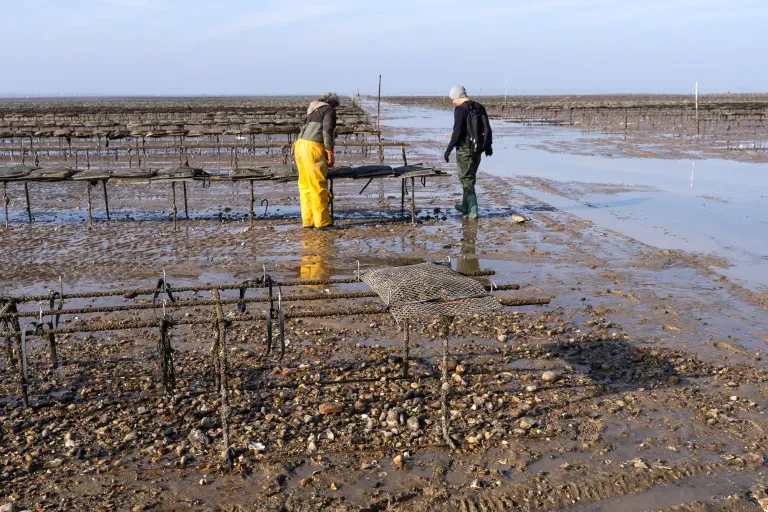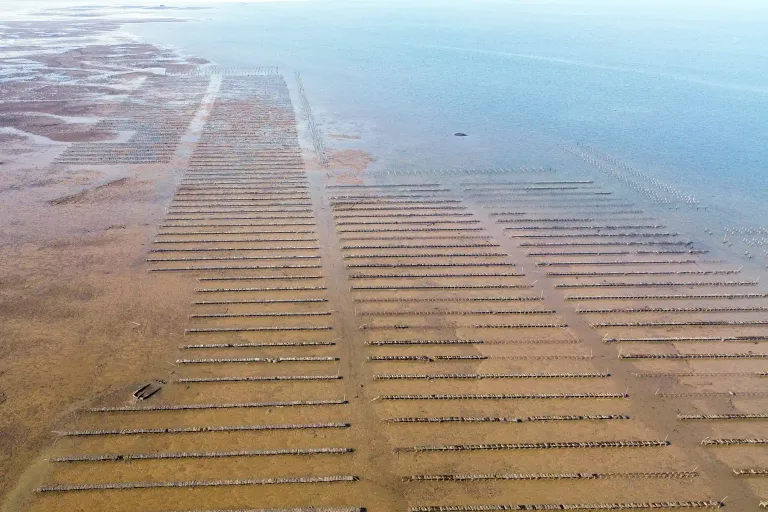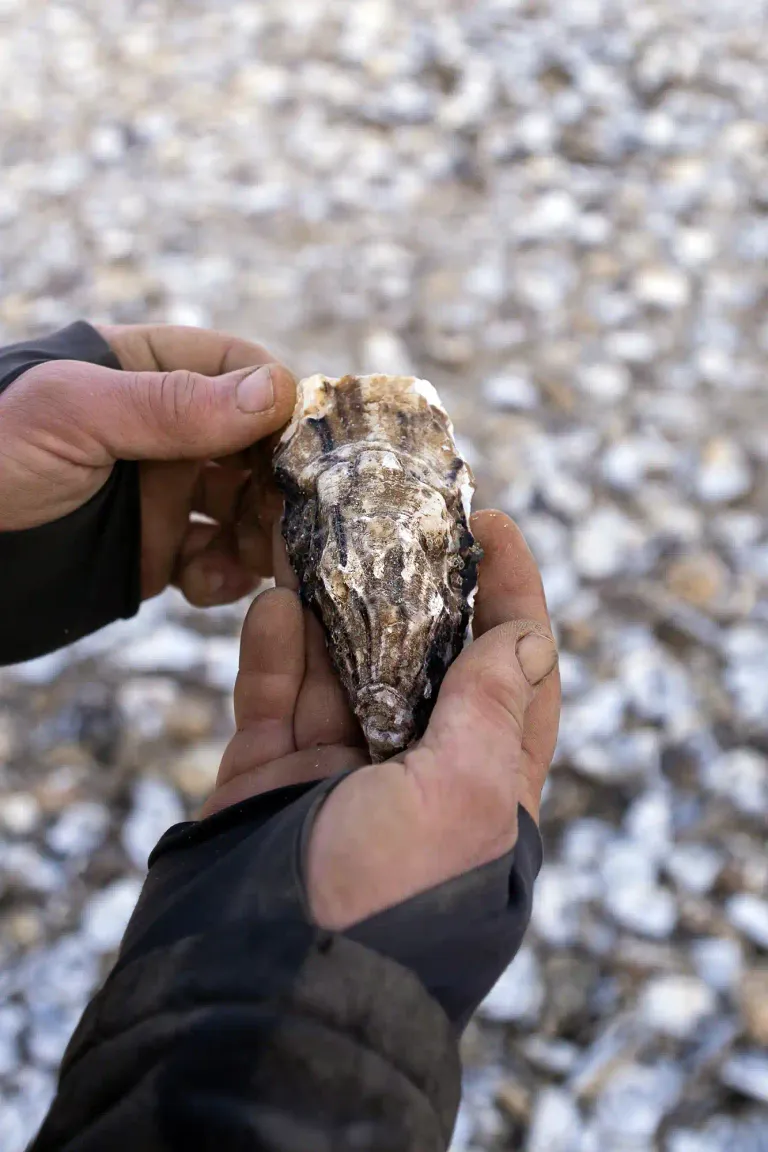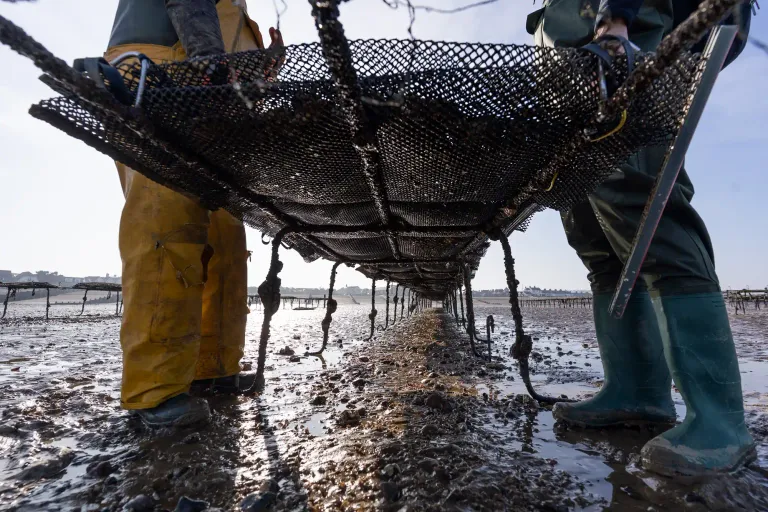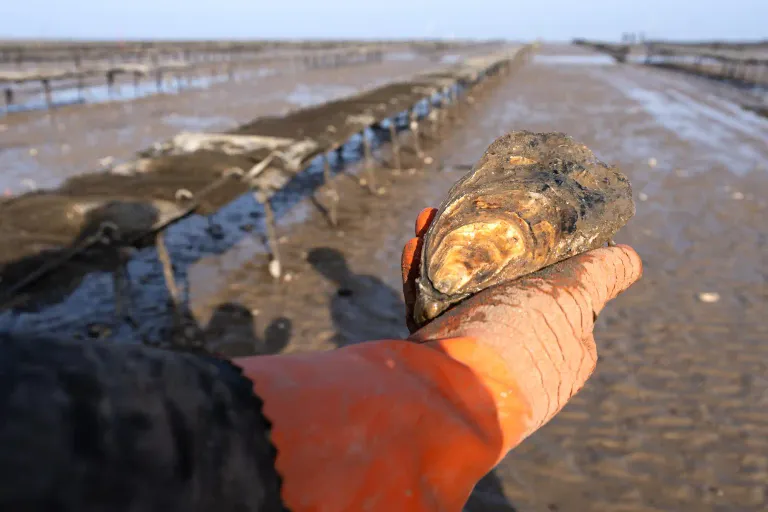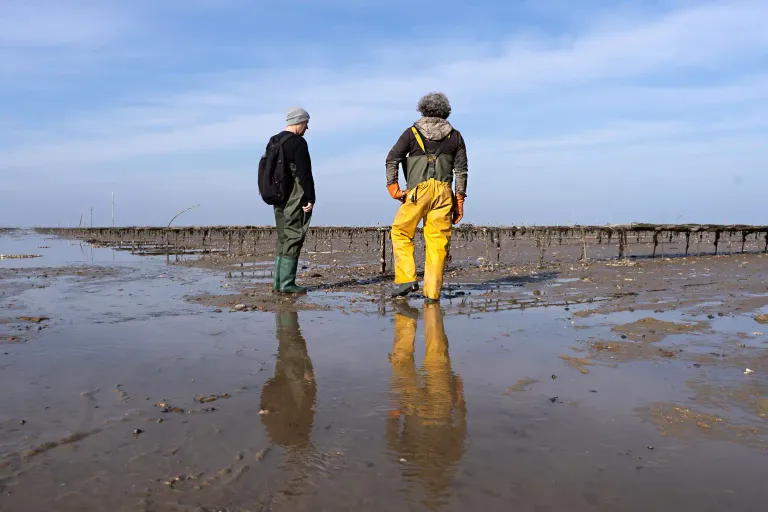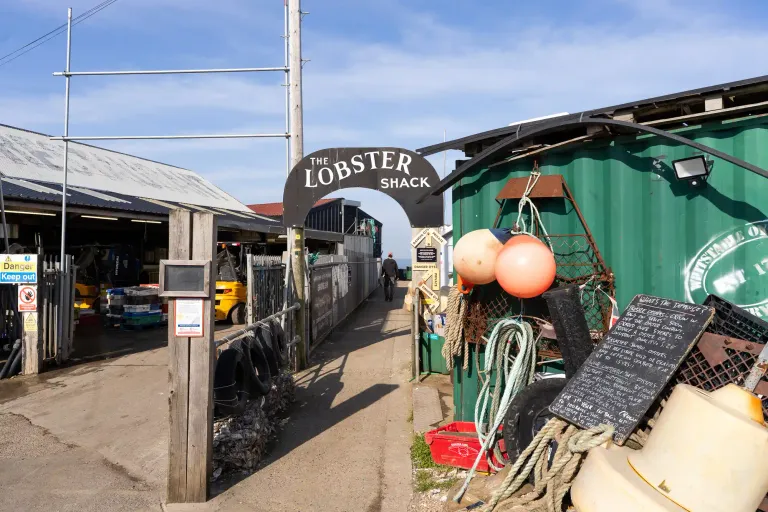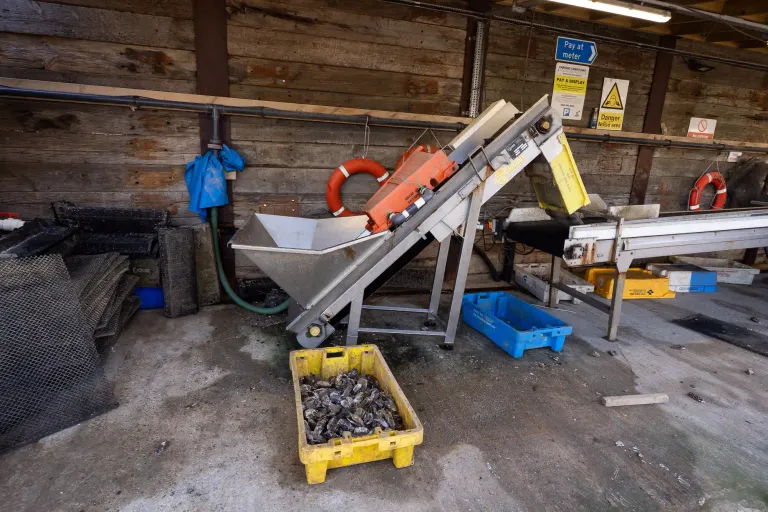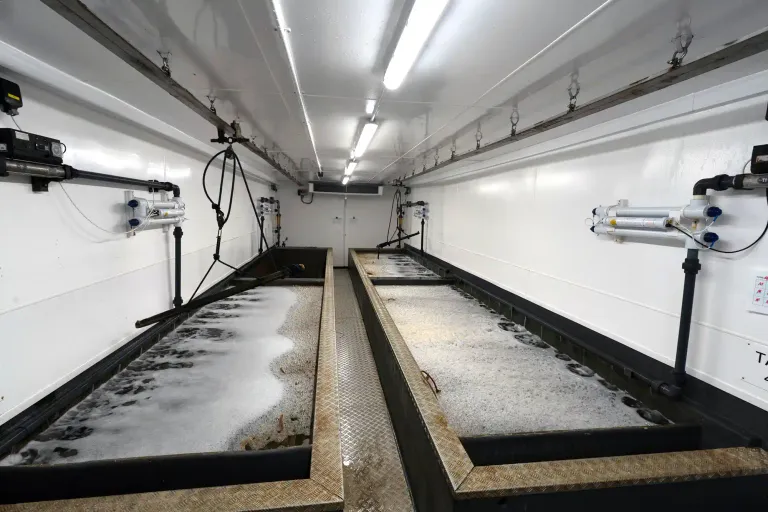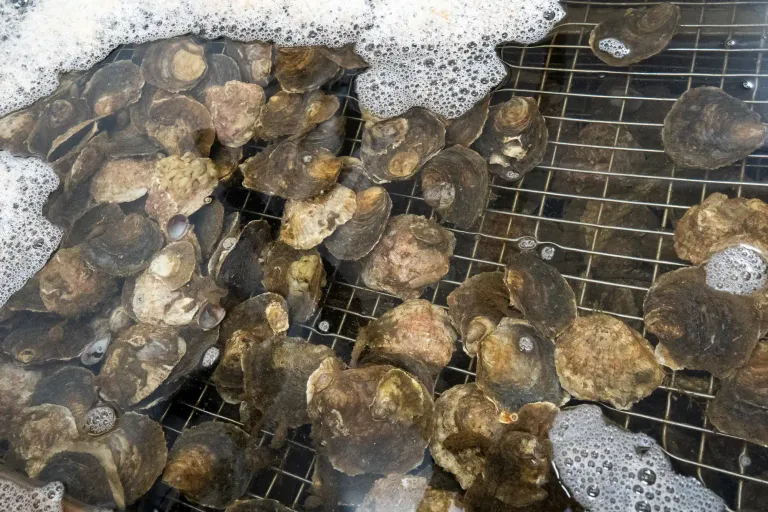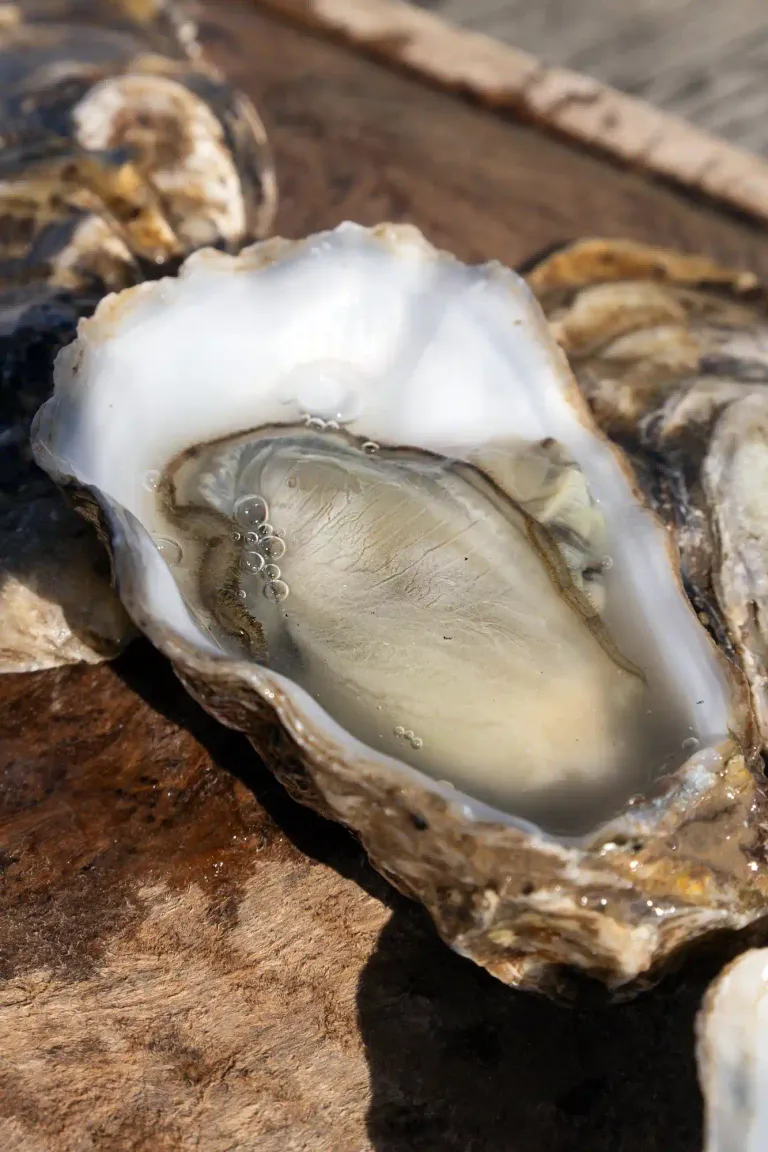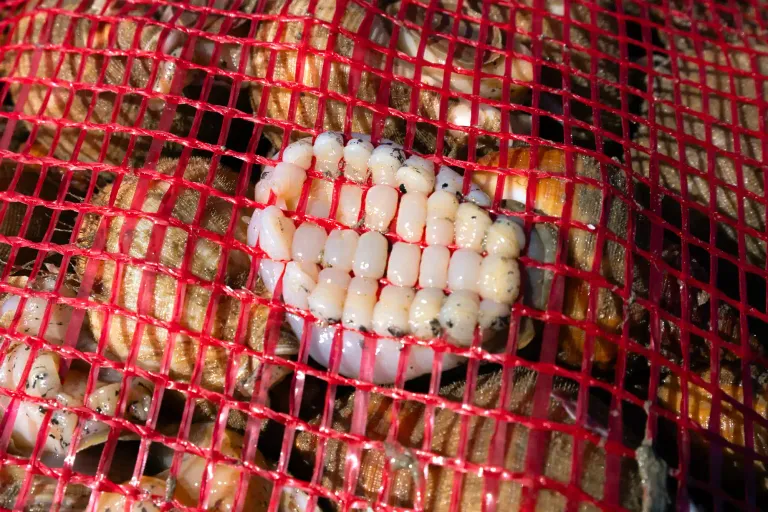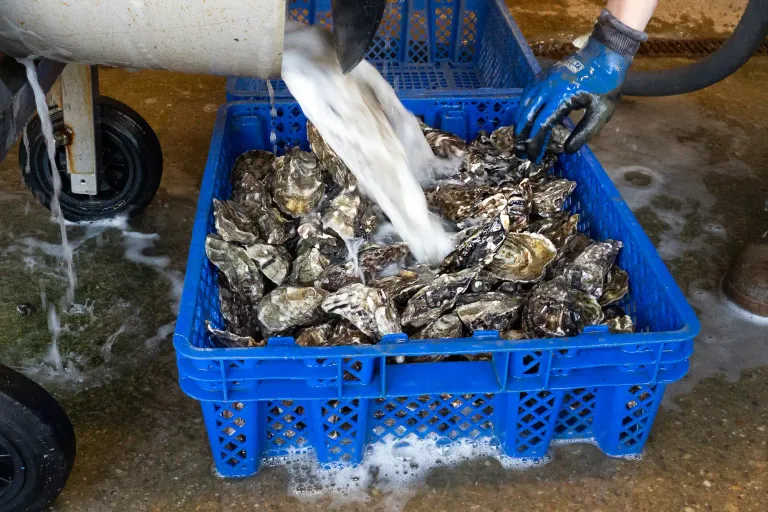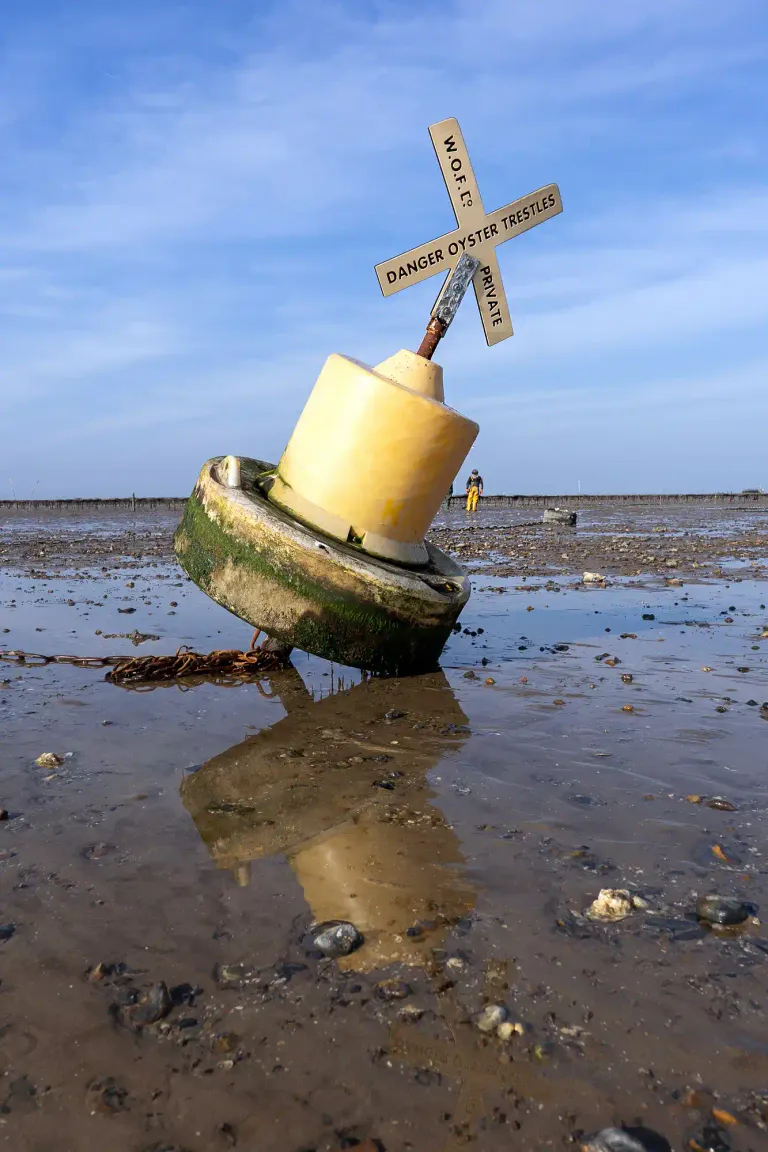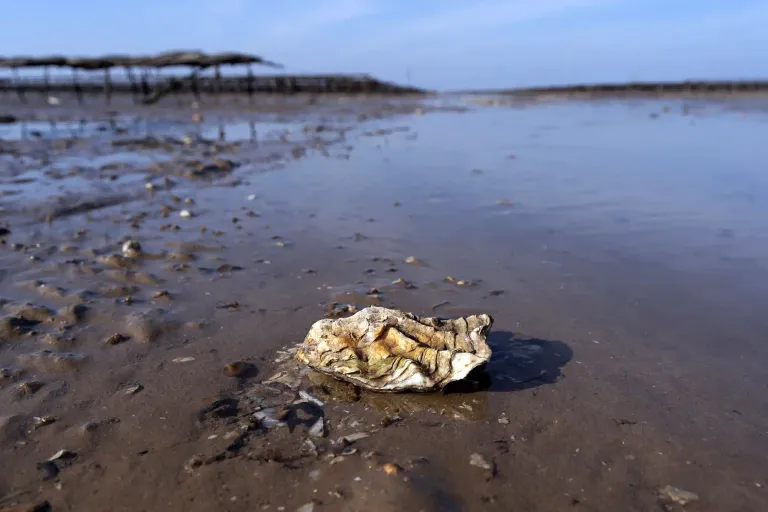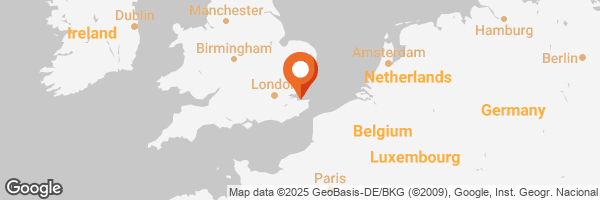We recently spent a month in the town of Whitstable, found a couple hours east of London on the coast of Kent. Though not large, the village is known around England for its oysters. One brightly sunny morning, we donned waders and set out to visit the beds where the famous oysters of Whitstable are kept.
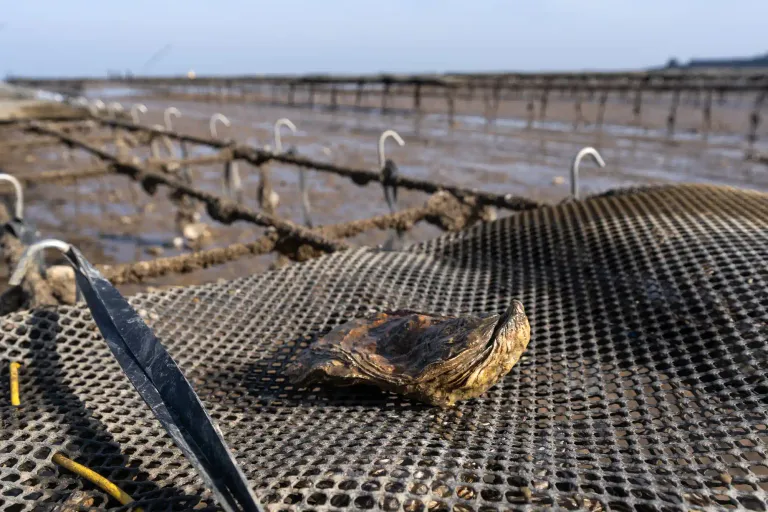
The UK is an island. As such, it has a lot of coastline, and practically all of it is owned by the crown… except for the part off Whitstable. A Royal Charter from 1793 grants ownership of the beach and harbor area to the Whitstable Oyster Fisheries Company, giving them the right to farm oysters right off shore. And they farm a lot of oysters.
e had to wait for a day during which the tides would be in our favor, exposing the oyster trestles and allowing us to walk out to them. That morning, we met our guide at a shed in front of the beach, slipped on waders, then followed him out into the bay while getting a quick history of oyster production in Whitstable.
Around the UK, Whitstable has become synonymous with oysters, and the town attracts legions of foodies to its restaurants. Last year alone, Whitstable shipped out eight million oysters around the country. That sounded unbelievable, but once we got out into the bay and started walking around the seemingly endless rows of oyster-filled boxes and trestles. “Yeah, actually eight million sounds about right.”
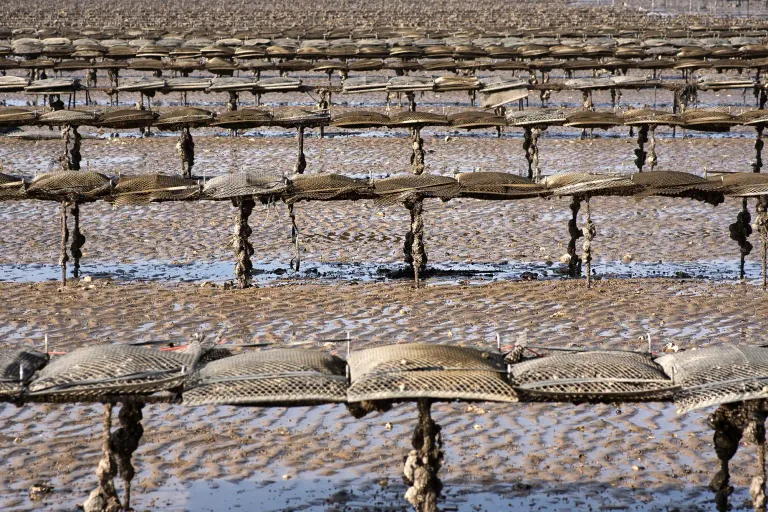
While there is a local Whitstable oyster, the huge majority farmed by the company are Rock oysters, which aren’t native to the region. These are non-reproducing oysters which grow well in this water, and have an excellent taste. The native Whitstable Oysters are gathered from natural beds that are a little further out.
We were able to sample both varieties at the Lobster Shack, after coming back to shore and taking off our waders. This is just one of the WOFC’s many properties, and is also where they weigh, filter, and prepare oysters for delivery and consumption. Basically, if you’re gonna eat an oyster, it doesn’t get fresher than the Lobster Shack… and they were delicious. I was more interested in trying the Whitstable oyster (which is rarer and correspondingly more expensive), but actually I preferred the taste of the more common Rock oyster.
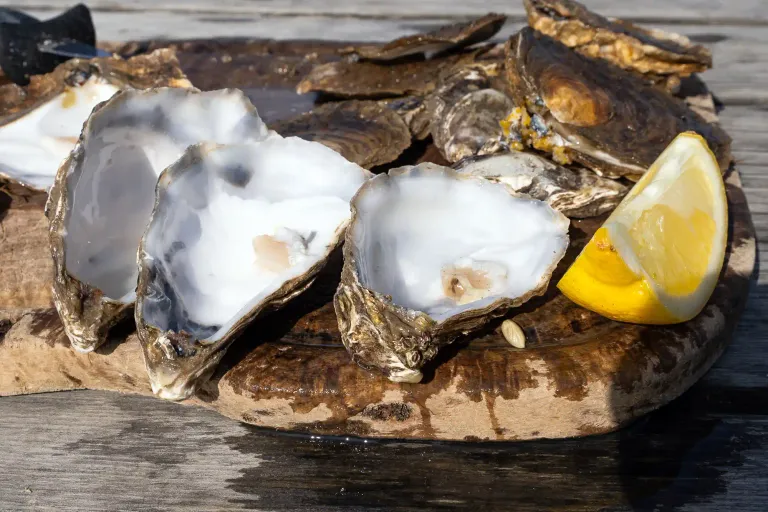
If you’re going to Whitstable, it’s probably a safe bet that you’ll be eating oysters at some point. But you might appreciate them more, if you also take a tour of the beds. These tours are available throughout the year, and also include a drink and a sampling of the oysters you’ve just seen growing. Visit their website for pricing and more details: Whitstable Oyster Tours.
Oyster Farm Photos
